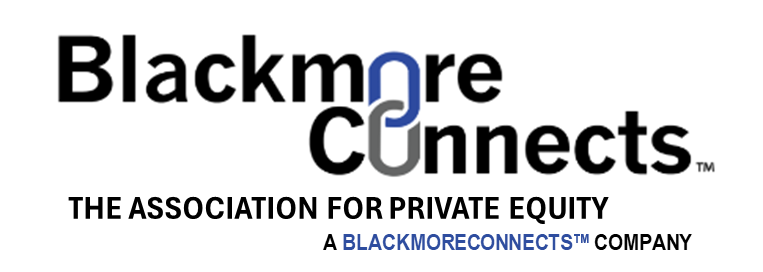Case Study: Blind Spots and the Hidden Costs for Executives Lacking PE-Specific Experience or working on their 3 of 4 PE deal- Part I
Written By: Gerald O’Dwyer II
The PE Guru — BlackmoreConnects, Inc | October 30, 2024
Introduction
For executives transitioning to private equity (PE) roles within portfolio companies, unfamiliarity with the unique dynamics of PE-backed environments can lead to substantial and often costly blind spots. Unlike public companies, PE portfolio firms operate under compressed timelines with specific growth and profitability targets that executives must understand and meet. This case study examines the hidden costs incurred by executives who lack adequate PE experience and highlights actionable insights for navigating these challenges effectively.
Key Blind Spots and Associated Costs
- Misalignment with the Value Creation Plan: $2-5 Million in Lost Opportunity
Executives unaccustomed to the PE environment may misunderstand the primary value creation plan (VCP), failing to prioritize the right initiatives. For instance, in a Bain study, a packaging company appointed a sales executive who had strong industry experience but lacked the agility required by the PE investors’ aggressive growth targets. This misalignment led to delayed execution of sales growth strategies and alienated existing teams, ultimately threatening the company’s revenue trajectory
Example: A similar scenario occurred with a firm whose CEO did not fully align with the PE investors’ goals for an aggressive market expansion plan. This misalignment can lead to poor execution, costing millions in unrealized revenue
- High Executive Turnover: $1-3 Million in Replacement and Training Costs
PE firms expect CEOs to be fully onboarded and delivering results within a short period, which requires strong cultural and strategic alignment from the outset. A survey by Russell Reynolds found that 50% of portfolio company CEOs are replaced within two years due to performance issues or strategic misalignment
. Replacing executives incurs recruiting fees, transition costs, and often an additional delay in achieving growth objectives. Notably, many PE firms prefer quick alignment with a new executive over spending time with an existing, underperforming one.
Impact: This turnover can generate over $1 million in replacement costs, and much more when factoring in delayed progress on the growth plan.
- Unfamiliarity with PE Performance Metrics: EBITDA Penalties Leading to Reduced Exit Multiples
Private equity requires specific metrics for gauging performance, often more aggressive and detailed than those of public or family-owned businesses. Without familiarity with key indicators such as adjusted EBITDA or run-rate revenue, executives may miss early signs of underperformance. For instance, McKinsey reported that portfolio companies not meeting EBITDA targets or growth metrics can face reduced multiples upon exit, significantly impacting investor returns
Example: A company whose leadership could not rapidly align cost controls and growth levers within the first 12 months saw a 10-20% reduction in exit valuation, impacting both the PE firm and the executive’s equity stake
- Cultural Misfit and Employee Turnover: Hidden Costs in Morale and Productivity
Executives with traditional public or family-run company experience may struggle to adapt to the rapid, often high-pressure culture of PE-backed firms. The packaging company example underscores the damage of cultural misfit, where a new hire’s hard-driving style led to significant internal resistance and turnover. When executives fail to integrate into the company culture, morale and productivity suffer, leading to hidden costs that compound over time.
Quantitative Impact: Studies show that poor cultural alignment can cost PE-backed companies approximately 5-10% of their annual revenue due to turnover and lost productivity
- Delayed Implementation of the Exit Plan: Lower IRR and Holding Costs
PE-owned firms are driven by exit timelines and high expectations for internal rate of return (IRR). Executives who do not adopt an exit-focused mindset from day one may delay key initiatives, resulting in extended holding periods and increased costs. Russell Reynolds highlights that each month of delayed execution on exit goals, such as operational efficiencies or scaling strategies, can diminish IRR by up to 2%
Example: In cases where exit preparation is overlooked, firms are often required to bring in external consultants or specialists to catch up on lagging projects, incurring further costs and reducing net returns at sale
Strategic Recommendations for Addressing Blind Spots
- Establish Clear Alignment on Value Creation and Exit Goals Early Executives should prioritize alignment with investors by engaging in strategy off-sites or workshops immediately post-acquisition. This structured onboarding can clarify the VCP, align on priorities, and set specific, measurable targets
- Embed Performance Dashboards and Metrics-Based Management Executives new to PE should adopt a granular approach to performance tracking. Utilizing dashboards for metrics like EBITDA, cash flow, and customer acquisition rates allows for rapid adjustments and better alignment with investor expectations
- Emphasize Cultural Fit During Recruitment Understanding the portfolio company’s culture is essential. A mismatch can lead to high employee turnover, so PE firms should include culture assessments as part of the executive selection process. Clear communication about expectations and values can significantly reduce friction
- Develop PE-Specific Training Programs To accelerate learning curves, PE firms might consider tailored training programs for new executives. Training should cover PE-specific practices, including short-term KPI management, financial modeling, and capital allocation strategies, providing executives with the tools they need for success in a PE context
- Prioritize Immediate Value Creation Actions Focusing on quick wins within the first 90 days can help executives build credibility and momentum. These early actions often set the tone for future projects, signal alignment with PE expectations, and reinforce an exit-focused approach
Conclusion
Executives who lack PE-specific experience face an array of costly blind spots that can hinder both their performance and the success of their portfolio company. By understanding these unique expectations, aligning with the value creation plan, and prioritizing cultural fit, executives can mitigate these risks and maximize their impact. For PE investors, structured onboarding and ongoing support can be pivotal in ensuring that leadership teams drive the expected value—ultimately achieving a successful exit.
